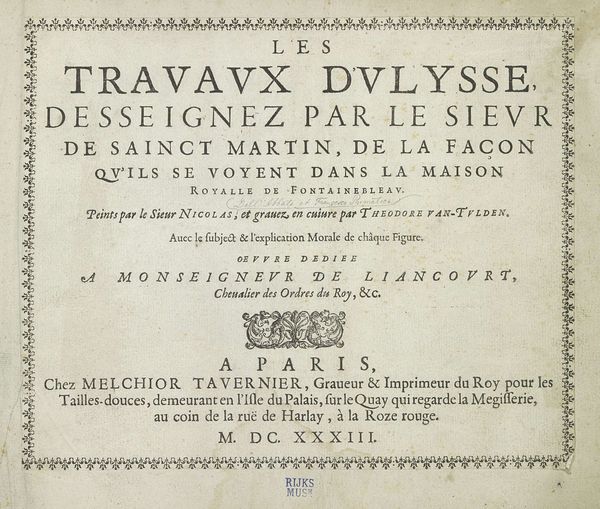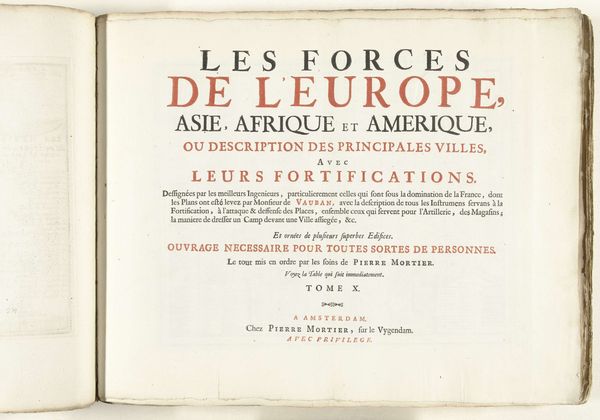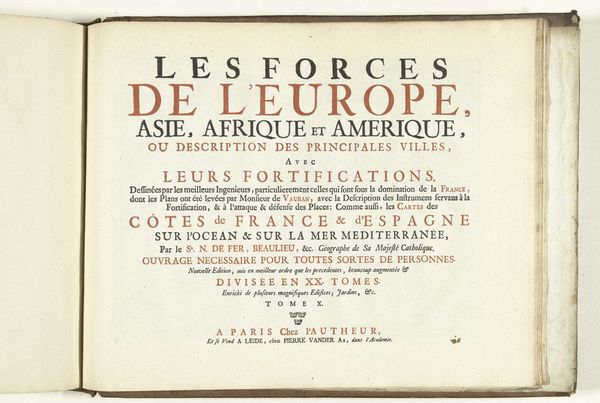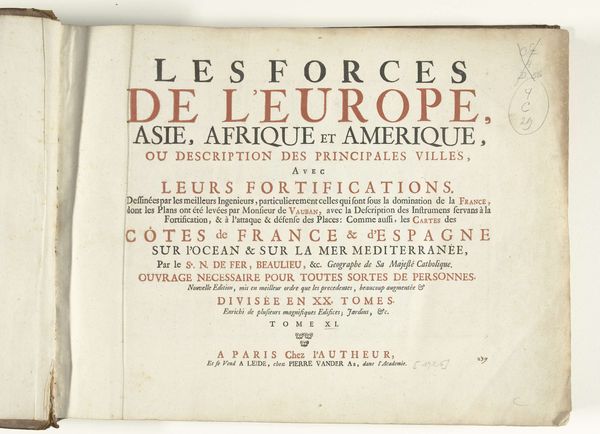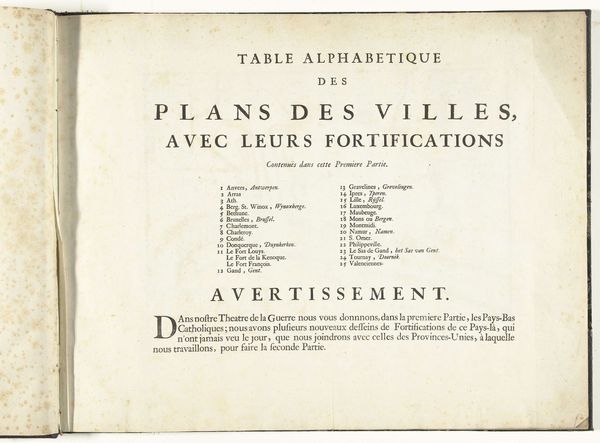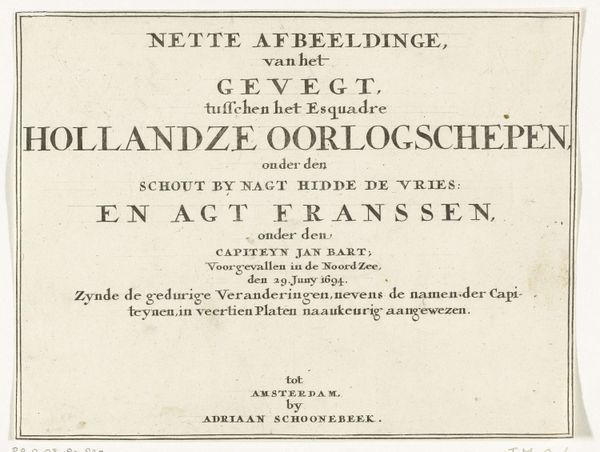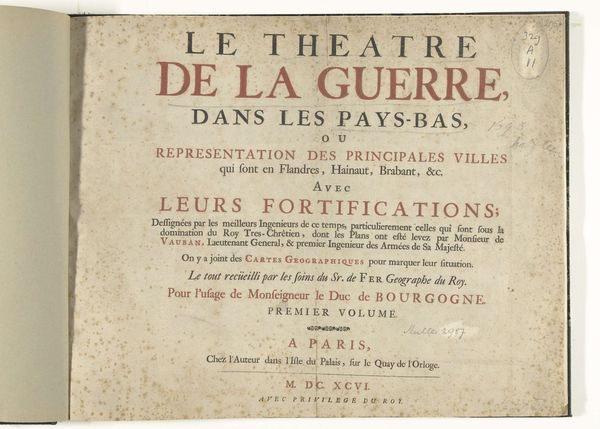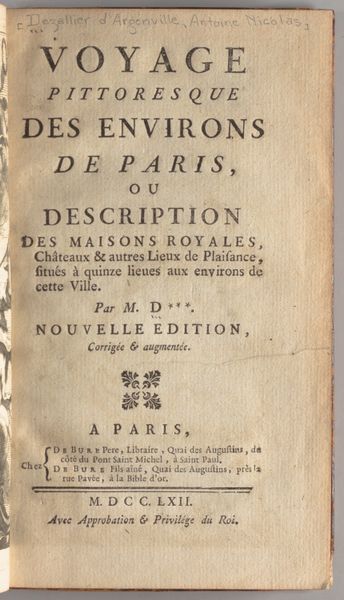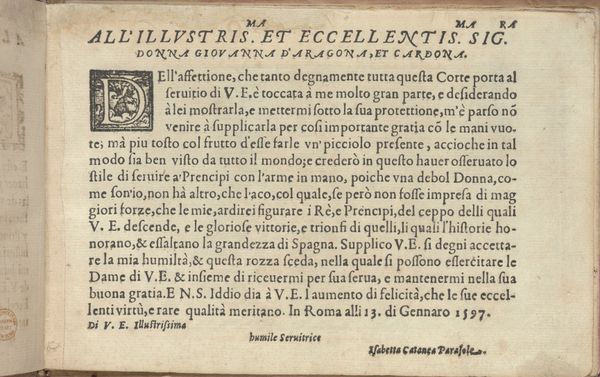
Titelpagina voor het tweede deel van het prentwerk: Les costes de France et d'Espagne, ca. 1702 1702 - 1703
0:00
0:00
pieterimortier
Rijksmuseum
graphic-art, print, typography, engraving
#
graphic-art
#
aged paper
#
hand-lettering
#
baroque
# print
#
hand drawn type
#
typography
#
hand-drawn typeface
#
fading type
#
stylized text
#
thick font
#
history-painting
#
handwritten font
#
golden font
#
engraving
#
historical font
Dimensions: height 320 mm, width 410 mm
Copyright: Rijks Museum: Open Domain
This is the title page for the second volume of "The Coasts of France and Spain," a print made around 1702 by Pieter Mortier in Amsterdam. The letters, bold and declarative, announce the volume's contents, a detailed charting of coastlines and fortifications. Look closer: the meticulous descriptions promised here are not merely geographical; they are strategic, intended "for the use of His Majesty’s naval forces." Maps, throughout time, have always held a dual purpose, haven’t they? As tools for navigation but also as instruments of power. Think of Ptolemy's "Geography," rediscovered in the Renaissance, or even the modern-day Peters projection, each reflecting a specific worldview. The act of mapping—of defining boundaries—is itself a psychological act. It betrays a need to control, to understand, to impose order on the unknown. As we gaze at this title page, we confront not just a description of land, but a projection of human will onto the world. This print reminds us that every map is a statement of intent, etched with the desires and fears of its creators.
Comments
No comments
Be the first to comment and join the conversation on the ultimate creative platform.

